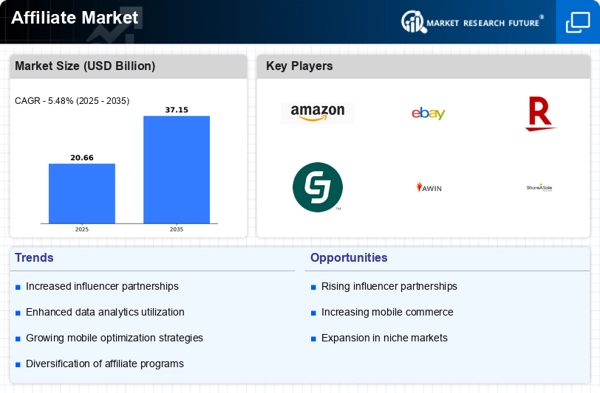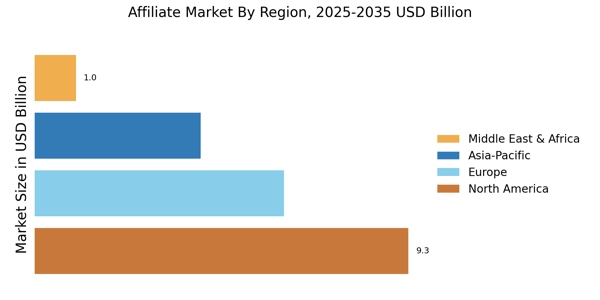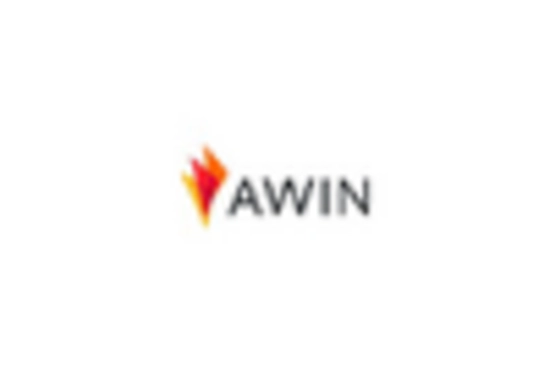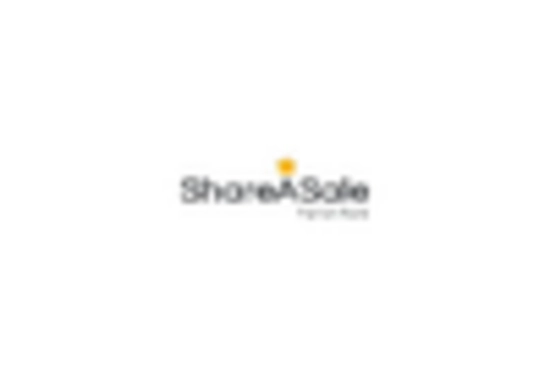The Affiliate Market is currently characterized by a dynamic competitive landscape, driven by rapid technological advancements and evolving consumer behaviors. Major players such as Amazon (US), CJ Affiliate Market (US), and Awin (DE) are strategically positioning themselves to leverage these changes. Amazon (US) continues to innovate its affiliate program by enhancing its user interface and expanding its product offerings, thereby attracting a broader range of affiliates. Meanwhile, CJ Affiliate Market (US) focuses on partnerships with emerging brands, which allows it to diversify its portfolio and strengthen its market presence. Awin (DE) emphasizes regional expansion, particularly in Asia and Latin America, which appears to be a strategic move to tap into new consumer bases and increase its global footprint.
The business tactics employed by these companies reflect a moderately fragmented market structure, where collaboration and competition coexist. Localizing services and optimizing supply chains are prevalent strategies that enhance operational efficiency and responsiveness to market demands. The collective influence of these key players shapes the market, as they set benchmarks for affiliate marketing practices and drive innovation across the sector.
In August 2025, Amazon (US) announced the launch of its new affiliate marketing tool, designed to provide affiliates with advanced analytics and performance tracking capabilities. This strategic move is likely to enhance affiliate engagement and optimize marketing efforts, thereby increasing conversion rates. By investing in technology that empowers affiliates, Amazon (US) reinforces its leadership position in the market and fosters loyalty among its partners.
In September 2025, CJ Affiliate Market (US) entered into a strategic partnership with a leading e-commerce platform, aiming to integrate their affiliate marketing solutions directly into the platform's ecosystem. This collaboration is significant as it not only expands CJ Affiliate Market's reach but also enhances the value proposition for its affiliates, who can now access a wider array of products and services. Such partnerships may indicate a trend towards deeper integration of affiliate marketing within e-commerce platforms, potentially reshaping the competitive landscape.
In July 2025, Awin (DE) launched a sustainability initiative aimed at promoting eco-friendly products through its affiliate network. This initiative aligns with the growing consumer demand for sustainable options and positions Awin (DE) as a forward-thinking player in the affiliate market. By prioritizing sustainability, Awin (DE) not only differentiates itself from competitors but also appeals to a conscientious consumer base, which could lead to increased affiliate engagement and sales.
As of October 2025, the competitive trends in the Affiliate Market are increasingly defined by digitalization, sustainability, and the integration of artificial intelligence. Strategic alliances are becoming more prevalent, as companies recognize the value of collaboration in enhancing their service offerings and market reach. Looking ahead, competitive differentiation is likely to evolve from traditional price-based competition to a focus on innovation, technological advancements, and supply chain reliability. This shift suggests that companies that prioritize these elements will be better positioned to thrive in an increasingly complex and competitive environment.


















Leave a Comment